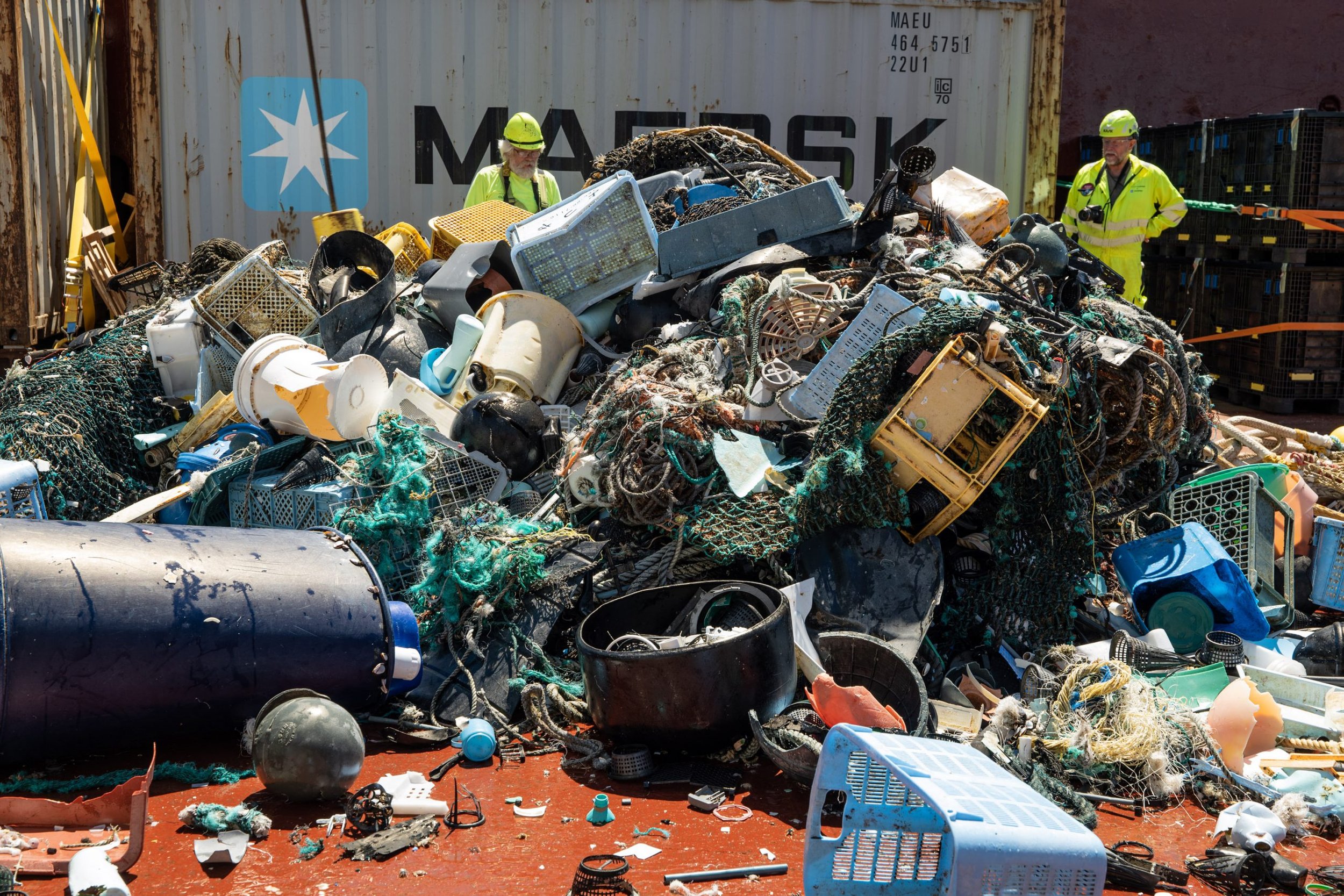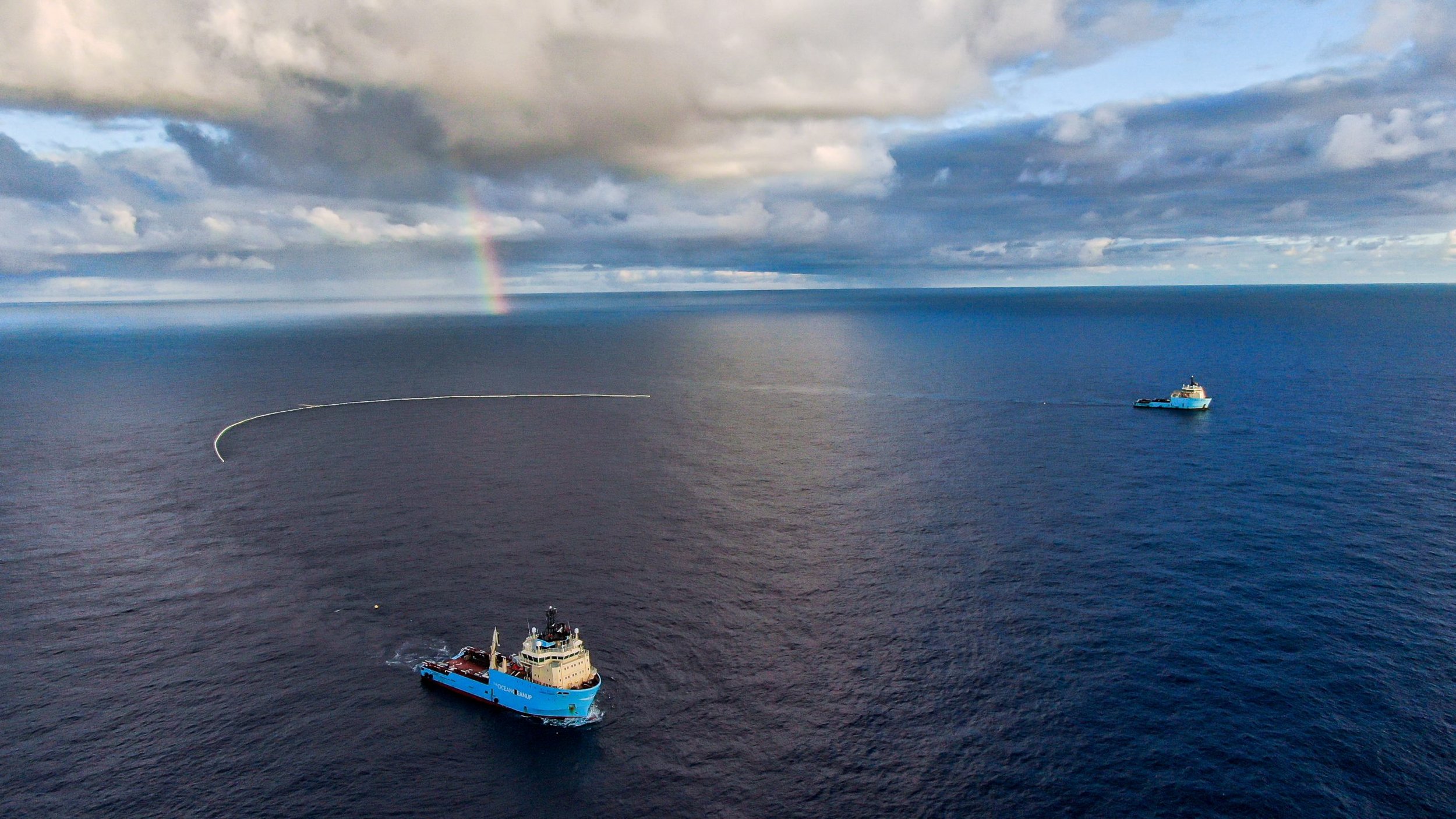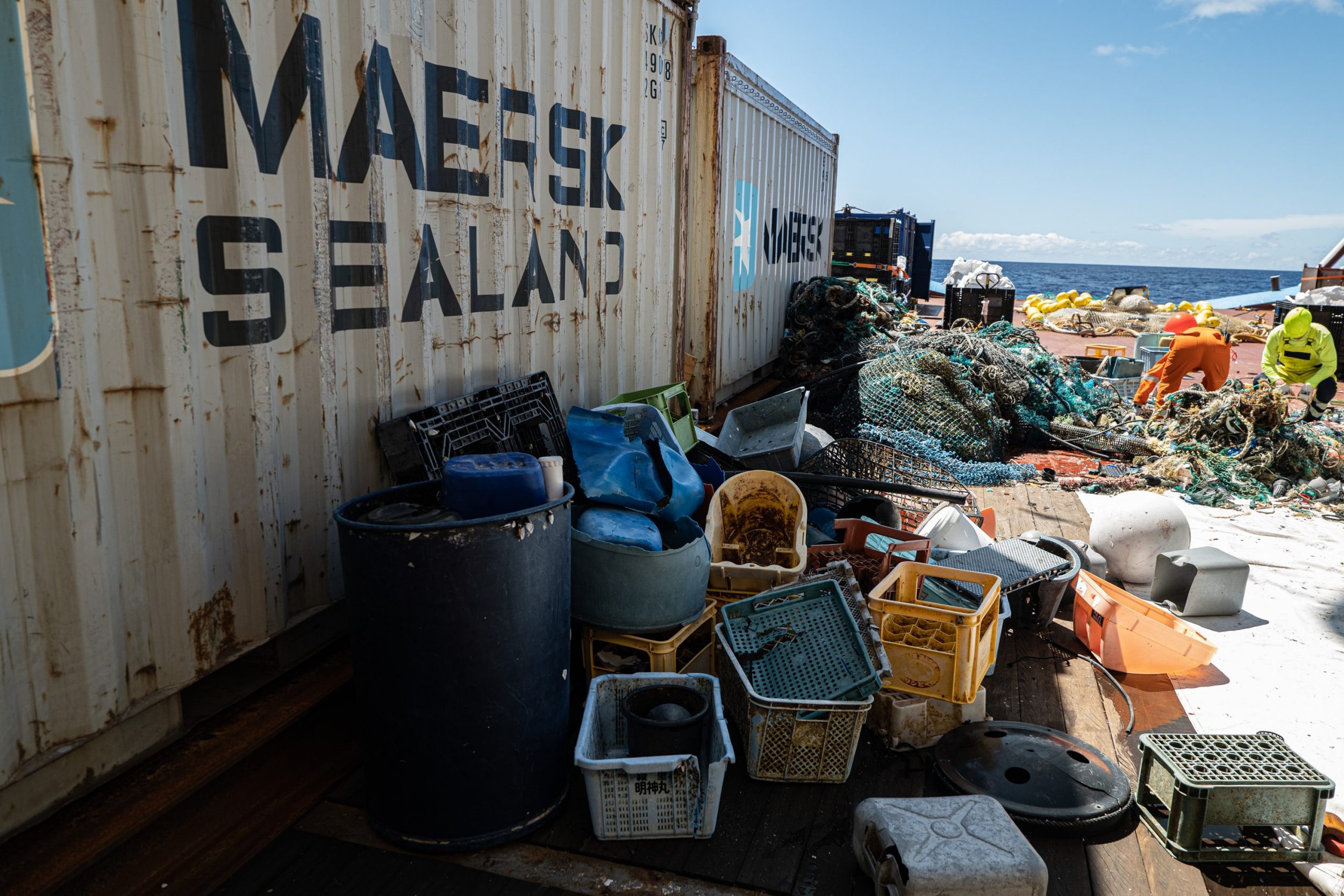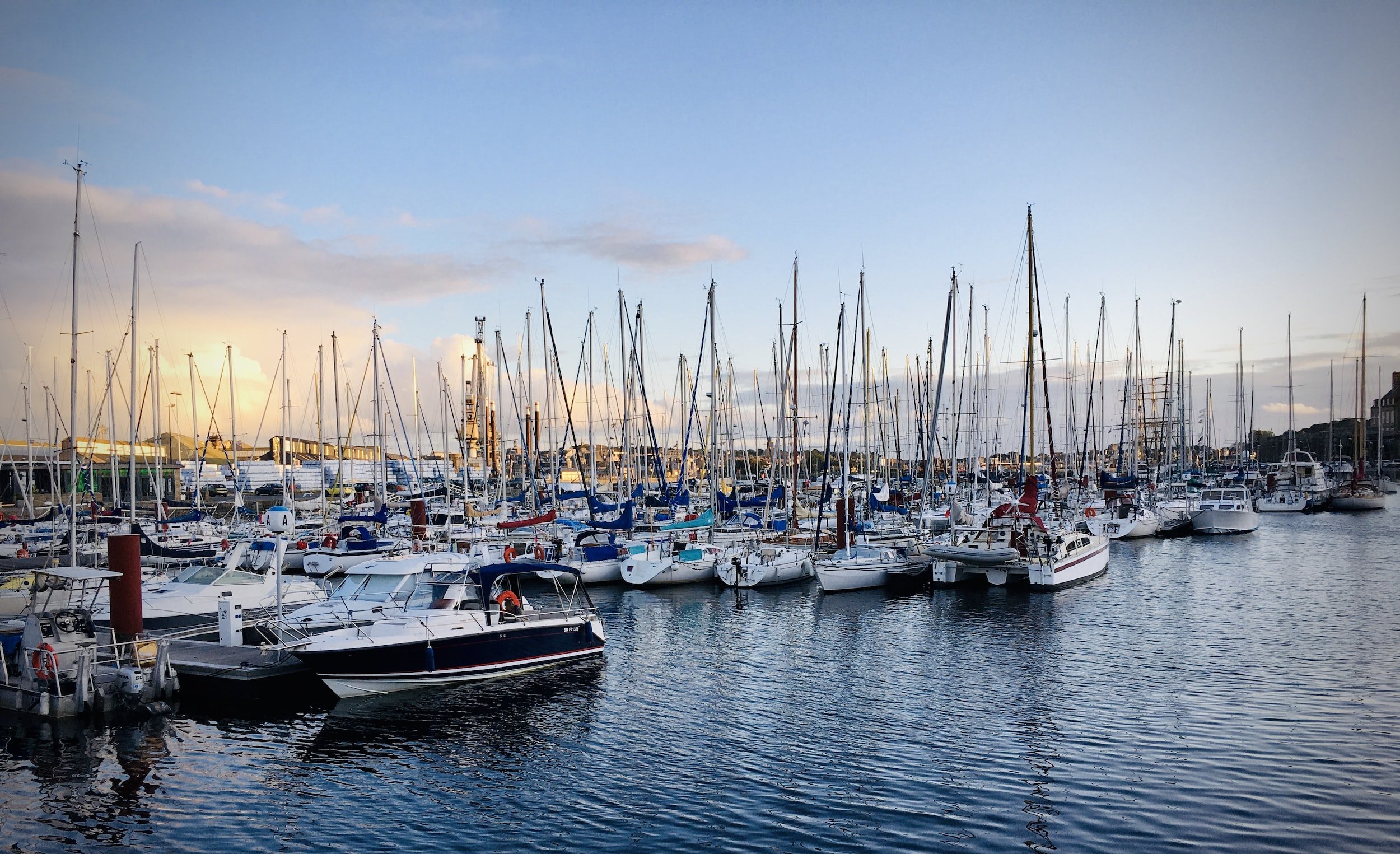ocean plastic: cleaning the ocean surface
Ocean plastic which escapes coastal areas and remains on the surface is spread out over millions of kilometres, making collecting it quite a challenge, particularly when it gets to the High Seas, beyond the jurisdiction of States. This lack of jurisdiction brings with it a lack of responsibility: no one controls the vast open ocean and so no one is accountable for its protection or preservation or indeed for cleaning it up. Attempts to do so (and the funding behind them) have come from non-governmental environmental organizations with the support of philanthropic agencies and civil society.
Numerous ideas about how to clean the surface have emerged over the years, from building a fleet of vast collection ships like the Ocean Phoenix or an enormous Garbage Seascaper to filter out trash, to launching satellite-controlled Eco-Mobile Robots to suck up trash. These and many other designs have stalled at the concept phase - finding funding for projects for the open ocean at such scale is clearly difficult. In contrast, designs for smaller-scale operations to clean areas closer to shore or rivers (which are both in full view of the public and fall clearly under the jurisdiction of a coastal State) have seen far greater levels of funding and success in implementation.
Concentrations of plastic debris in surface waters of the global ocean. Colored circles indicate mass concentrations (legend on top right). From Plastic debris in the open ocean. https://doi.org/10.1073/pnas.1314705111
As the map shows, the largest of the five gyres, the Great Pacific Garbage Patch, has attracted the most ocean plastic. Not surprisingly it has also attracted the most attention when it comes to cleanup projects. Ideally the cleanup systems trialled in the GPGP can be implemented in the other gyres when proven successful.
The logistics of all projected cleanup missions involve a three-step approach:
1. detection and assessment of the debris using satellite and UAVs;
2. collection using nets, filters or booms - either with numerous small vessels and one 'mother' ship, or one large ship. Storage of the debris onboard the vessel; and
3. processing of the debris, either onboard or by returning the plastic to port for recycling.

Naja Bertolt Jensen/Unsplash

The Ocean Cleanup

The Ocean Cleanup

The Ocean Cleanup
Spotlight on The Ocean Cleanup
Founded in 2013 by aerospace engineering student Boyan Slat in Delft, the Netherlands, The Ocean Cleanup is a non-profit organization aiming to rid the ocean of 90% of the floating ocean plastic by 2040 and to stop 80% of riverine plastic from entering the ocean.
In order to remove the plastic from such a the vast area, The Ocean Cleanup deploys a U-shaped 600 metre long boom held between two ships to catch it, propelling it into a retention zone at the base point of the U and holding it in a net there. The system can pick up plastic from a few metres wide (such as discarded fishing nets) down to a few millimetres in size. When the net is full it is pulled aboard, emptied and then returned to the ocean to continue collecting. When the containers on board the vessels are full they are returned to port, where the plastic is sorted and sent for recycling. The project aims for a circular system "Catch, release, recycle, repeat" until the floating plastic has been removed.
After various trials and failures with System 001 (nicknamed Wilson), the Ocean Cleanup's System 002 (aka Jenny) completed a successful three-month trial in late 2021, in which nine trash extractions removed over 28 tonnes of plastic, with just one haul collecting as much as 9 tonnes. Work is now ongoing on System 003 (with no nickname so far), a larger, upgraded ocean system, with a 2.5 km long boom and a debris retention zone three times greater than that of System 002. System 003 is expected to be the blueprint design for scaling up to a fleet of about 10 systems capable of cleaning the GPGP by 2040.
The Ocean Cleanup presents its latest update here:
How to keep plastic out of the ocean/The Economist

Dwi Cahyo/Unsplash

Jacqueline O'Gara/Unsplash

Egor Myznik/Unsplash

Armand Khoury/Unsplash
Another project aiming to scale up by 2025 is Our Cleaner Planet, created by Pat Marshall, like Boyan Slat an aerospace engineer. His design involves a ship equipped with a harvester which will remove both macroplastics and microplastics on the surface and in the water column down to just under 20 metres. The project is undergoing tests with scalable prototypes, the current developmental step is a 1/12-scale unit that is due for testing in early 2022. The harvested plastic will be processed into fuel onboard the vessel rather than returned to port. The goal is to develop a fleet of ships, with each vessel designed to remove up to 1,000 metric tonnes of plastic annually. Our Cleaner Planet expects to launch its first full-sized harvester in early 2025.
At this stage it is pertinent to note an extremely important aspect of cleanups which is the necessity to protect marine life during the cleanup process. Environmental Impact Assessments (EIAs) need to be conducted before large-scale operations can be put into place to ensure that the tools used to remove plastic from the ocean do not have an impact upon the marine life it is trying to protect. EIAs need to monitor potential impacts to the biological, physical, chemical and social environment of the ocean, including through impact on marine life (plankton, neuston (a group of animals, plants and microorganisms that spend all or large parts of their life floating in the top few centimetres of the ocean), fish, turtles and marine mammals, benthic life, as well as birds), the atmosphere through emissions, other ocean activities and industries (such as shipping, fisheries, tourism or navy operations) or local communities (for those projects aiming to use waste disposal facilities on land to recycle the debris collected). Some of the collection schemes use sound as a means of warning marine life away from the cleanup mechanism while recent developments in the use of solar-powered green LED lights in gillnets to alert marine mammals to their presence and reduce bycatch show that coloured light could also be deployed to warn away marine life.
Spotlight on Waste Free Oceans
Involving a larger community in the problem can have a much greater effect. This is the idea behind Waste Free Oceans, which collaborates with fishermen and local communities encouraging them to collect waste as they work. According to their website, Waste Free Oceans seeks to make use of fishers' familiarity with local water conditions and their technical knowledge, seeing them as ideal partners in the fight against ocean plastic pollution.
For this, Waste Free Oceans has developed the 'Trash Catcher', a trawl net which can be attached to regular fishing boats, allowing fishermen to fish for ocean plastic on their idle fishing days, with a projected collection of between 2 and 8 tonnes of marine litter on each journey. The trawl net extends 70 cm into the water column to ensure that only floating litter is collected and to minimise the effect on marine life.
The project, which is already in use all over the world (see their map) is introduced here:

